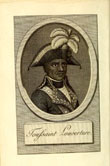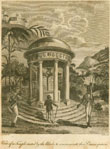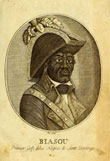People
An eclectic mixture of African, Indigenous, and European peoples populated the island of Hispaniola.
Haiti has had many inhabitants over the centuries from the original Ciboneys and Tainos (a subgroup of the Arawak), to the Spanish who came with Columbus, the French who dominated the western half of the island from the middle of seventeenth century to the end of the eighteenth, and the African peoples who liberated themselves from bondage and created the new nation of Haiti in 1804. Of course, there were variations between and within these categories – Africans taken from different parts of Africa, French from different parts of France (though a large percentage came from Gascony), and the large number of “free people of color” and others of mixed-race ancestry who increasingly populated the Saint Domingue colony in the eighteenth century. To a large degree, Saint Domingue was a colony of new arrivals, more male than female, more young than old, and full of restless adventurers who had come to the island from a great distance. On the eve of the Haitian Revolution, this small place, about the size of Massachusetts, held a huge number of people: roughly 30,000 French colonists, 30,000 free people of color, and at least half a million slaves, many of whom had been born in Africa. But it was always a place that resisted easy categorization; in addition to the above, there were German immigrants, Acadians, Poles, and Jews. The books in this section shed insight into some of the many people who populated Saint Domingue and Haiti.


